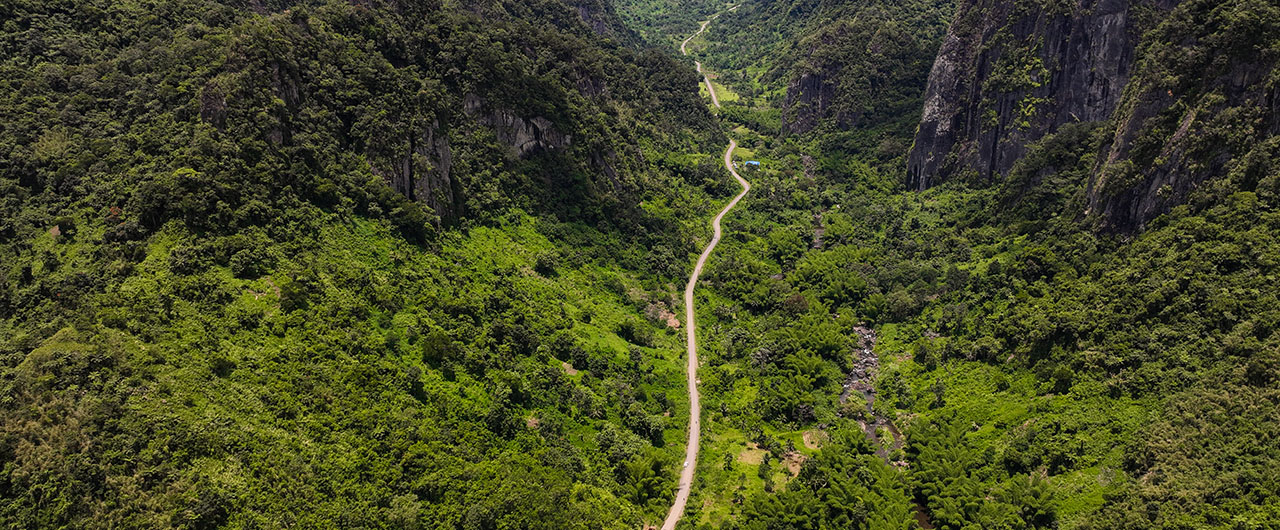Harvesting Your Food
In the remote parts of Fiji, people live off the land, planting, foraging and harvesting food with the changing seasons. While hiking Viti Levu’s mountainous heart with Domoika Adventures, you can get a taste of local life by learning to forage for ota – a freshwater fern used in traditional dishes. Similarly, at the nearby Namosi Eco Retreat, activities include harvesting staple root crops like dalo or going ‘prawning’ with the local women. The sense of achievement in sourcing your own food is hard to beat but you’ll also leave with a deeper appreciation for the simple comforts that you enjoy at home.
Cooking Like a Local
At the Namosi Eco Retreat, once you’ve gathered the ingredients, learn to make a tasty Fijian meal. Traditional Fijian cuisine consists mostly of root crops, green leafy veggies, fruit and fish from the river typically served raw, boiled or doused in creamy coconut milk (flavored with onion, chili and lemon of course!). Even if you’re vegan or vegetarian, you’ll find plenty of food options to keep your tummy happy.
Kava Time and Storytelling
Across Fiji, kava (aka yaqona) drinking is a beloved tradition and most evenings, you’ll be invited to join in this social ritual. Kava —a traditional drink made from the dried and pounded roots of a type of pepper plant, is consumed both socially and ceremonially in Fiji. But after the more formal i-sevusevu welcome, the ambience becomes much more relaxed with lots of talanoa ( storytelling) and music. While drinking kava, remember to adopt the local customs: sit cross-legged on the floor, greet your hosts with a hearty Bula! then clap once before you drink and three times afterwards to express your gratitude. Learn more about kava etiquette with this detailed guide.
Rafting with Bamboo
Most often, highland village life revolves around a river – as a source of fresh water, for agriculture, and a spot for washing and swimming. In the days before roads, rivers were vital ‘highway’s to the coast, navigated by bamboo rafts known as bilibili. At Namosi Eco Retreat, you’ll get a chance to construct a bilibili, steer it downriver and have a blast playing on the river with the village kids.
Dancing the ‘meke’
Fijians love dancing and it doesn’t take much to get us grooving. Most resorts in Fiji feature a night filled with traditional Fijian dance (meke) but at Namosi Eco Retreat, you can also join in and learn the movements. Meke is a traditional dance performed by men and women in Fiji to tell stories through song and dance. Generally, men’s dances showcase strong movements, while the women are more graceful and feminine. And if you’re worried about perfecting the moves, don’t be. Just joining in on village activities is always welcome.
Trekking to a Waterfall
Fiji’s high-country is brimming with rivers and waterfalls – making it the perfect full-day activity for hikers and nature lovers. Pack some sturdy hiking shoes and some quick-dry clothing to keep you warm. In Namosi near Pacific Harbour, you can camp by the riverside and join Domoika Adventures exploring their different waterfall trails or take a full-day adventure to the lovely Wainuta waterfall with Namosi Eco Retreat. And if you’re hiking with Talanoa Treks in the Suncoast, don’t miss out on Savulelele Waterfall near Nabalasere village – it’s particularly impressive after good rain.
Relaxing with a Fijian Massage
Amidst all your outdoor adventures, don’t forget to carve out moments for relaxation. At the Namosi Eco Retreat, treat yourself to a Fijian Bobo massage. This traditional deep-tissue technique - aimed at relaxing and healing aches and pains - uses local oils and skilled hands to target and ease tension. It’s the perfect way to unwind and soothe tired muscles post-hike. 
